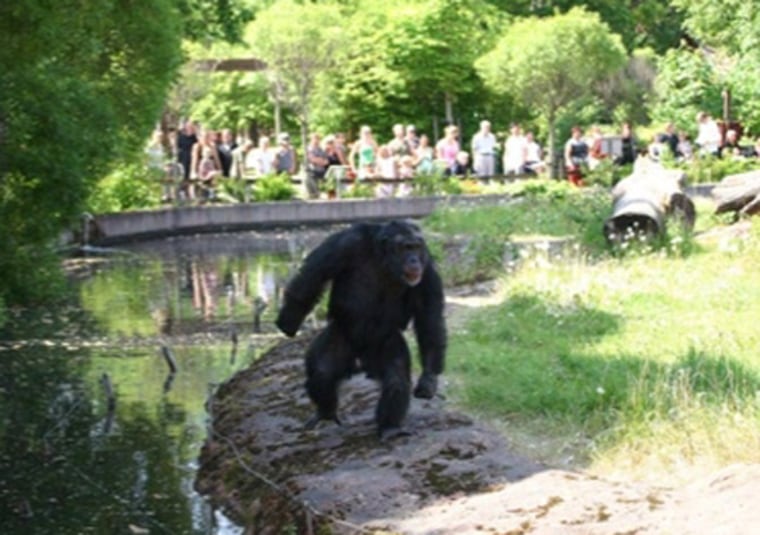If non-human primates could be arrested, Santino the chimp might be behind jail bars for throwing stones and handcrafted weapons at zoo visitors, since a new study found his cleverly orchestrated attacks were premeditated.
The discovery, published in the latest issue of Current Biology, provides evidence that chimpanzees can plan for a future, rather than a current, mental state. This, in turn, implies "advanced consciousness and cognition traditionally not associated with animals," according to Mathias Osvath, who conducted the study.
Staff at the Furuvik Zoo in Sweden first became suspicious in 1997 when they spotted multiple stone piles at the park's "chimpanzee island" where Santino lives, explained Osvath, a Lund University researcher in the field of cognitive science.
A caretaker performed surveillance by hiding herself behind a blind to investigate what was going on.
She observed that "on five consecutive days, before the zoo opened, the chimpanzee gathered stones from the water and placed them in caches." Later on each of these days, Santino was seen throwing the rocks at unsuspecting zoo visitors.
"Stone throwing toward a crowd of people has an instant and dramatic effect," Osvath wrote, "and was a way to evoke reactions across the water moat that enclosed the chimpanzee."
In 1998, Santino tweaked his method by adding pieces of concrete to his ammunition. In order to do this, he had to detect invisible weak areas in concrete rock structures located at the center of the island.
"The chimpanzee was observed to gently knock on the concrete rocks, from time to time delivering harder blows to break off the detached surface in section in discoidal pieces, and sometimes breaking these into further smaller fragments," Osvath explained, adding that "these manufactured missiles were often transported to the caches at the shoreline."
Since Santino's behavior was first noticed, Osvath and various zoo staff have observed him gathering stones on at least 50 distinct occasions, and manufacturing concrete "missile" discs around 18 times.
Santino is the lone male on the island, which he has shared with multiple females over the years. The females "seem to show little interest in the stone caches and concrete disc manufacturing."
The chimp's calculating behavior began one year after the group's dominant male died, and appears to somewhat mirror primate dominance displays in the wild. Due to weather and other restrictions, the chimps are only on public display for 25 percent of the year, so the Swedish chimps may be less accustomed to human gawkers than are chimpanzees housed at other zoos.
Chimps may not even be the only animals that feel compelled to attack humans with rocks from time to time.
Antonio Moura, who conducted research while in the Department of Biological Anthropology at the University of Cambridge, observed capuchin monkeys at Serra da Capivara National Park in Brazil. Moura noticed that whenever he approached, the monkeys would move to higher ground and search for a loose stone, which they would then hit on a rock surface several times.
This activity not only led to a disturbing noise racket, but it also dislodged other stones that could hit Moura, or any other approaching individual, from below.
Scientists at the Primate Research Institute in Kyoto have additionally documented Japanese macaques making noise with stones, as well as throwing them.
"The recent emergence of a unique behavior, stone throwing, may serve to augment the effect of intimidation displays," concluded primatologist Michael Huffman and his colleagues. "Research on such transformation may shed light on the evolution of stone-tool use in early hominids."
